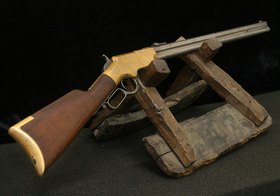How important is the Gun?
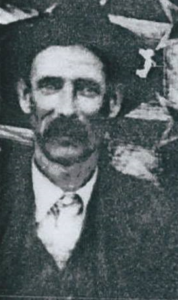
In part one of Doc’s Gun, we discussed the indictment against Dr. Marshall Benton Taylor. In another video in this series, we discussed the fact that the original indictment was quashed and that a new indictment was issued. The only major change in these two indictments was the “gun” used by Taylor.
In our last video we discussed the fact that the original indictment had stated that Doc Taylor had used “a gun valued at $5” to kill Ira Mullins. That was changed to “a pistol valued at $5” in the new indictment but by the time of the September 1892 trial, the prosecution had abandoned the pistol in questioning and instead focused on the rifle.
As we have stated this was because at the time of the 2nd indictment on July 26th, Taylor had been arrested in possession of the two Colt 45 pistols he owned. But by the September trial, the prosecution knew that the ammunition casings found at the crime scene did not match those pistols.
Clues Left by Johnson
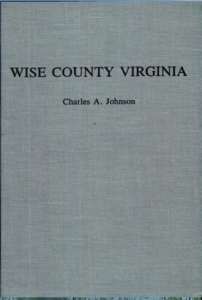
In Doc’s Gun part one, we also examined the information given to us by Charles Johnson in his 1938 book “A Narrative History of Wise County Va.” We examined what Mr. Johnson had said about what he had been told about the case.
We have also pointed out that Mr. Johnson went to great lengths to obtain “the only existing copy of the transcript of the trial.” Johnson tells us that the indictment, transcript, and affidavits he had obtained had come directly from the appellate court.
And that the court had used this transcript as its basis for not granting a new trial to Taylor. But Johnson knew that there was something wrong. Johnson was a retired court clerk, and he knew that what he had been told by the surviving officers of the court from the trial, did not match the evidence he had uncovered from the appellate court.
In his telling of the story, Charles Johnson often seems vague in his details although this is NOT because he is trying unintentionally to be vague. The appearance of vagueness comes from the fact that he intentionally tells the story in a rambling non-linear way.
Indeed, jumping from point to point in his telling of the story appears to tell another story. IF you are aware of certain facts. And know what to look for in what he says or doesn’t say.
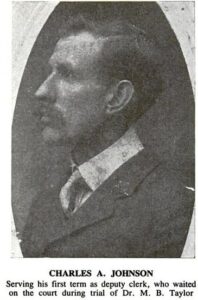
Johnson seems to leave clues to this in several places in his book. And in a very peculiar statement. Especially when considering that this odd statement is coming from a retired court clerk.
One of these clues can be found in his telling about the massacre itself. He includes the myth that states that Dr. Taylor went AWOL from his guard duty in the middle of the night during the Talt Hall trial. This dereliction of duty is always explained as him preparing for the Ira Mullins shooting. This was never attested too during the Taylor trial.
Some may argue that this shooting was not the Pound Gap Massacre itself but was the “shooting through the bedroom window” that occurred at Ira’s home prior to the massacre. There are several problems with this myth, the Hall trial ended in February 1892, the bedroom shooting occurred in April, and the massacre was in May.
Anyone from the time of the massacre would have known this myth was not true. Additionally, this is one of the easiest of the myths, stories, and folktales to debunk, so why did Johnson include it in his book?
Johnson’s Bread Crumbs to History
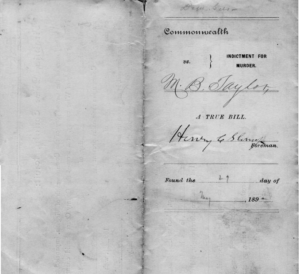
In the last chapter of “A Narrative History of Wise County Va.” Johnson is emphatic to tell us about the transcript. This is the only existing copy, and it is the one that was sent to the appellate court. However, Johnson has already told us that 12 “exceptions” had been made to the trial and that these exceptions were supposed to be attached to this transcript.
But the only things he was able to obtain from the appellate court was a two-part indictment, the transcript, and the affidavits. The Two-Part indictment was a melding of the two separate indictments. We know this because the two parts are duplicates of each other with a single word difference. One reads gun, the second reads pistol. We believe that this may have been one of the exceptions.
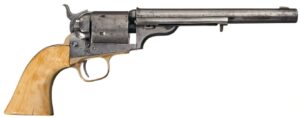
Taylor was indicted with the accusation that he had used his pistol. But after reading the transcript and the affidavits, we know that this indictment was abandoned in favor of the rifle. To justify the indictment in the eyes of the appellate court, we believe that the original indictment reading gun was attached to the pistol indictment.
We think that Charles Johnson may have understood this as well. And therefore, he opens the last chapter of the book by asking the same questions about the trial that has now been asked for 130 years. However, we have no way of knowing if Charles Johnson suspected as we do. That some of the testimony about the physical evidence in the court record had been altered to reflect the rifle in the transcript sent to the appellate court.
Was the Transcript Altered?
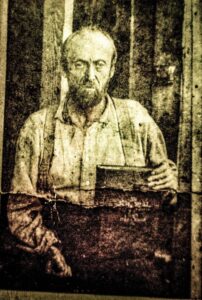
But considering the odd statement he makes after asking the questions, he also may have suspected an alteration.
He states, “There has been much conflict and diversity of opinion among the older class, that has been handed down to the young generation, as to just what the evidence really was on which the jury passed their verdict of guilt.”
He then tells us about the transcript, and instead of stating, here is the evidence, the matter is settled. He tells us to read the transcript and decide the answer for ourselves.
Basically, he is stating that he is recording everything he discovered in his investigation specifically so that the younger generation and those in the future asking the same questions will know why those questions were being asked from the day the massacre happened.
Likewise, we believe that others who were more intimate with the trial were asking the same questions and leaving clues as they were able.
John Fox Jr.
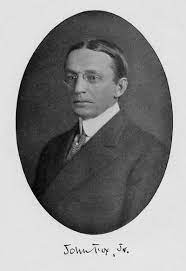
Take John Fox Jr. although his book “Trail of the Lonesome Pine” is a work of fiction. It is well known in the mountains that the work is based on real people and real events. We believe he gave us a clue to the questions surrounding Doc’s gun and the ammunition casings found at the crime scene.
In his book, Mr. Fox says that the Red Fox carried a rim fired Winchester 50-70. There are several problems with this statement. John Fox’s book was published in 1912, it is by looking at this date and the information he gives about the gun that several problems arise.
In 1912 the Winchester 50-70 did not exist and would not until Winchester introduced the Model 70 in the 1920’s this was the first gun by Winchester that used 50 caliber ammunition and no ammunition produced larger than a 44 has ever been produced in a ‘Rim Fire’ variant, so what is it that John Fox is telling us? Basically, what he is saying is wrong caliber wrong gun… How do we know this?
John Fox Jr was intimate to both the Talt Hall and the Doc Taylor trials. As he was listed as a guard at the Wise County jail for both cases… AND it is said that in both cases he had used Doc Taylor’s rifle while guarding the jailhouse. This means that he also had intimate knowledge of the type of rifle Taylor A.K.A the Red Fox owned and the type of ammunition it used.
The Taylor Family Letters
According to letters kept by the family, Doctor Taylor’s rifle was a rare gun. It was the first “Big Game” rifle produced by Winchester. It was also the first “true” 45 caliber rifle ever produced AND it was the second “center fire” rifle that was ever made by Winchester. The rifle cost well over $5 and was only produced in a limited run. The official name of the rifle was “The Winchester 1876 Centennial Repeating Rifle.”
Right Gun for the Right Ammunition?
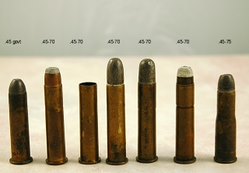
The 45 G O V T ammunition was a variant of the very common rim fired Henry 44 long cartridge that got its name in two ways. Originally it was supposed to be for a Colt 45-caliber rifle produced for the US Calvary. Basically, the unscrupulous gun manufacture reproduced a 44 Henry repeating rifle.
The only real difference was that Colt manufactured ammunition using the 45 G O V T name on the box. After the company was caught and made to make amends to the government. Colt sold the ammunition works to the US Ammunition Company. This company kept the 45govt name but started stamping US on the bottom of the shell casings.
To anyone who found one of these popular 44 Henry Long shells, they would have been immediately recognized as a 45govt because of the US stamp. And because of this stamp they were often mistakenly said to have been the ammunition of a government issued rifle. Just as the often-told story tells us.
Winchester, the Gun that Won the West
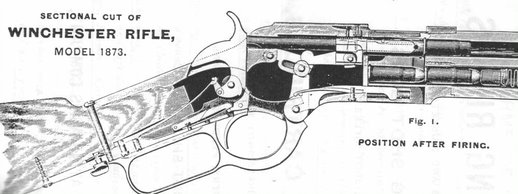
The model 1873 Winchester repeating rifle, often called “The Gun that Won the West” was produced in two variants. The first was rim fired and used the very common Henry 44 Long ammunition. The 2nd variant used the new 44×70 WCF, or Winchester Center Fire ammunition which was a center fire modification of the Henry 44 long…
At the time, it was very common and desirable that both your rifle and your pistol to use the same ammunition. Therefore prior to 1894 Winchester sold more rim fired model 1873 repeating rifles than the WCF variant. This was because there was a multitude of rifles and pistols which used ammunition based upon the Henry 44 Long ammunition.
In 1894 Winchester started producing the 1873 rifle in a variant that had a dual firing pin that resembled a capital H. This variant was capable of firing both the rim fire, and center fire ammunition. They would also produce a kit to modify the earlier rifles. This fact, more than anything else, is what made the model 1873 rifle so popular, as it could fire any 44-caliber ammunition on hand… this included the 45govt ammunition produced by the US ammunition company.
Doc’s Gun
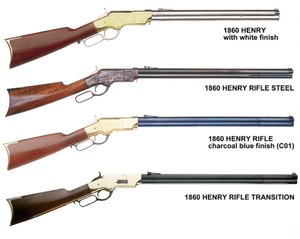
But Doc Taylor’s rifle was a “true” 45 caliber rifle. Other than a slight bottle necking on the 45 WCF ammo it is impossible to distinguish the size difference by eye, between it and ammunition based upon the Henry 44 Long. An interesting note here, Dr. Taylor’s rife could not chamber the Colt 45 ammunition made for his pistols.
That ammunition would have had to be manually inserted into the rifle chamber before it could be fired. But the Colt pistols he carried could fire the 45×75 WCF ammo made for his rifle. Likewise, Dr. Taylor’s rifle could not chamber any variant of the Henry 44 Long ammunition because of the slight size difference and the lacking bottle neck feature.
However, the 44 long ammunition could have been manually chambered, one at a time. But because of the size difference, Taylor’s rifle would have always struck the shell casings “just of center” as we are told in the story. What this meant is that Dr. Taylor’s rifle could not fire any of the 44 ammunition variants. It was incapable of striking the firing cap on the 44×70 WCF and because of design differences, it could not fire the rim fire ammunition. Even the 44 Long variant known as the 45govt.
Jury Mishandling
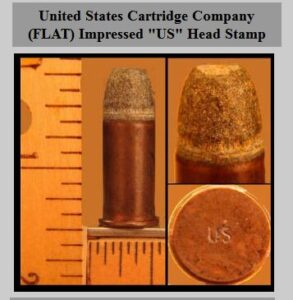
We understand that this maybe confusing for some of our readers. However, it is important to keep in mind that Doc’s gun was not capable of firing the type of bullets indicated by the shell casings that were left under the pine cones.
Doc’s gun had not been entered into evidence prior to the last day of testimony. Testimony was given at that time that the rifle was in working condition and had been used and fired over the course of the trial. The rifle was NOT returned from the jury in its former working condition.
This alone triggered the 1st exception in the trial and should have been grounds for a mistrial. However, for whatever the reason, the judge overruled the call for mistrial. Sentence was then passed, and the discrepancies were allowed to stand.
On a last further note. From all accounts, the rifle and the part listed in sheriff Holbrook’s affidavit disappeared after the trial
Thank You
We at Kentucky Tennessee Living would like to thank you for watching our series on The Killing Rock. Don’t forget to hit that like button as the more likes we receive the more likely YouTube is to suggest our videos to other viewers. Also, to receive notice when we upload a new video be sure to subscribe and click the bell notification.
We thank you for continuing to support Kentucky Tennessee Living. As we bring to you the history of the Appalachian Mountains. We must remind everyone that the story names Killing Rock: The Oft Told Tale (s) and Killing Rock: The Untold Story and Killing Rock: the Trial are all under Kentucky Tennessee Living copyright.
Source Information
A Narrative History of Wise County, Virginia By Charles A. Johnson Pub. 1938.
The Trail of the Lonesome Pine by John Fox Jr. Pub. 1908 | AmmoGuide, | .44 Henry| Wikipedia, | .44 Henry Cartridges Winchester rifle Wikipedia, | .44-40 Winchester Ballistics GunData.org, | THE CARTRIDGE COLLECTOR .44Henry | Real Guns Winchester Model 1873 Short Rifle, | .45 Schofield Wikipedia, | Richmond dispatch. (Richmond, Va.) August 02, 1892, « Chronicling America « Library of Congress, | SHOOTING the Swiss Vetterli Infantry Rifle | Pensacola Fishing Forum New life for an old soldier | MILITARIA.ES 44WCF | Winchester Model 1873 Carbines For Sale by LeRoy Merz | Antique Firearms Winchester Model 1873 Repeating Rifle | stevespages.com 1873: Year of the Guns | Taylor& Co. Trapdoor Carbine Sporting Rifle and Colt Single Action Army | Guns of the Old West | COLLECTOR’S CORNER: WINCHESTER MODEL 1873’S BY RAY HOUSE |Winchester rifle Model 1873 Wikipedia, | Winchester Collector | RareWinchesters.com… A private collection of rare and historic Henry and Winchester repeating arms| The Winchester Repeating Rifle, The Gun That Won The West Antique Ammo | Western Frontier Collectible.
Copyright and Other Information
All photos are in the public domain unless otherwise noted. This includes photos dated before 1923. All other photos are used with permission or under the education fair use statute of the US copyright law.
Copyright 2022 Kentucky Tennessee Living
kytnliving.com/copyright-2/
Social Media Pages
For more about us, you can visit our Facebook page:
https://www.facebook.com/kytnliving
Our Twitter page:
https://www.twitter.com/KYTNLiving
Our YouTube Channel:
https://www.youtube.com/kytnliving
When we forget our past and who we are as a people, then we become who “they” say we are. ~~ David Sergent
I have attended the University of Kentucky. I have an Associates Degree from Hazard Community College and Technical School. I have also attended the University of Pikeville. I have taken several classes in Journalism as well as in the Appalachian History, Literature, and Sociology during my time at those schools.
I was born in Florida and grew up in Burdine, Kentucky. I have been married to David W. Sergent since May 4, 2013. I have two children and four grandchildren from a previous marriage. I currently live in Tennessee but my hope is to one day come back home to live in the beautiful mountains once more.


